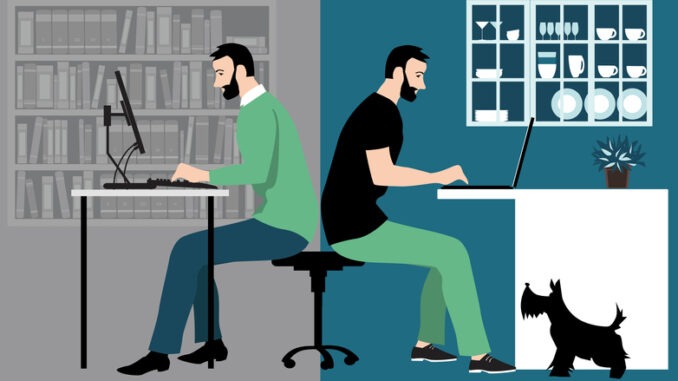
Annemarie Estess explores the impact of a hybrid work environment and how to encourage productivity for employees working from home
CREDIT: This is an edited version of an article that originally appeared on Aspire
Back in November 2020 when I asked my coaching clients how they were doing with working from home, they described some highlights — ‘I guess I sleep a bit more’ — and lowlights – ‘We’re struggling for space and getting cabin fever’ — of the experience, but ‘lonely’ was the overtone.
I spoke then with people aged 20s-to-60s, graduates to executives, across varied industries and roles. Their circumstances varied but they all described feeling more alone than usual. They were also unsure of what to do about it when the reality was that they were likely to continue to work from home, with no defined end in sight, against the backdrop of the pandemic.
Even though most people logically understood how extraordinary these circumstances were, many were still convinced they were doing something wrong, that it was a failure of their time management or productivity skills, somehow, if they didn’t feel as fired-up and connected to work as they once did. When we zoom out (no pun intended) and look at the trajectory that work has taken for many organisations and staff since 2020, our loneliness, and uncertainty about how to address it, is not surprising. Working from home used to be an exceptional arrangement, something we might have longed for, or tried to get approval for here-and-there as a perk; now, in 2022, ‘hybrid working’ is on everyone’s lips.
A report by the Office for National Statistics in 2019 showed that the number of employees working mainly from home was around five per cent. That figure jumped to about 49% of employees working mainly from in June 2020. These figures are pretty striking. They remind us that we were in uncharted waters as a workforce and, to some extent, we still are. It’s no wonder so many of us may, even now, be feeling adrift and unsure of how to work well at a distance. Of course, some people are loving being based at home but others aren’t so happy, for various and valid reasons.
Wherever you find yourself on that spectrum, it’s fair to say that we’re still collectively in a living experiment about how we can remain connected, engaged and motivated about work without having meaningful, in-person interactions with colleagues every working day.
Here I’m sharing food for thought and approaches that I’ve picked up from clients and colleagues, various podcasts that discuss work fulfilment and engagement amid the pandemic, and my own experimentation of home-working habits. All of them revolve around the same key idea – how to make our contact with each other more regular, more honest, more fun and more human.
Bring back the ‘coffee-machine chatter’ when working from home
We may have never expected to miss small talk while waiting for the kettle to boil, but the in-between-meeting moments, and informal conversations, seem to be missed a great deal. Allow a few minutes to, quite literally, sit and chat over a beverage. Even five minutes at the start or end of a one-to-one or team meeting can go a long way to building positive attachment in the team, broadening our base of trust and comfort with each other.
As counterintuitive as it may sound, structure in ‘unstructured’ time with your colleagues
Yes, many of us are coping with meeting fatigue and might groan if someone were to suggest another video call, but we shouldn’t underestimate how powerful it can be to have a ‘phone or video chat where we catch up as people, beyond the scope of work.
If you’re in charge of a recurring meeting, start it with a short check-in
This can involve asking people to name a word or a couple of sentences about their headspace that day. It’s a chance to get a temperature check on how people are doing when we aren’t otherwise getting much interaction with each other.
If you’re a leader or manager working from home, do what you can to give practical support
This might mean flexing a colleague’s working hours to accommodate caretaking responsibilities and facilitating team conversations to gauge where people can tag-team tasks so they aren’t feeling isolated and buried.
Broaden your support base beyond work
Many people I’ve spoken with, particularly those in senior leadership positions, recognise that they need to be able to let down their guard and connect with people who aren’t colleagues. They need somewhere independent and external to get support. Seeking out people and forums – friends, family, networking groups, training programmes, professional support like coaching and therapy can give us a more dynamic, broader base of support while working from home.
Listen out for what people are finding difficult about working from home and what they’re finding helpful
You might find a grab-bag of various strategies people are coming up with to stay motivated, engaged and healthy while working from home. If you’re a leader in the organisation, these strategies can be compiled and shared informally or formally.
These approaches won’t replace what we get from being side-by-side with each other, able to organically strike up chat, gauge each other’s moods, stroll to get tea and share stories of the weekend, but they can be part of the important work to revitalise our sense of connection to colleagues, to our work, and to ourselves as hybrid working becomes more and more the ‘new normal’.


Be the first to comment